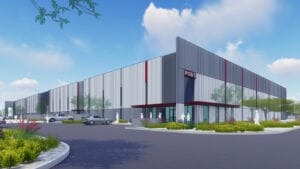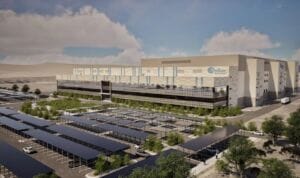The Phoenix office market is continuing to evolve as demand for upgraded Class-A space drives a surge in tenant improvement projects, according to LGE Design Build’s newly released Q2 2025 Construction Delivery Outlook.
“Phoenix’s growth trajectory is still strong, but we’re now seeing more selective investment as developers and owners react to new market signals,” said Blake Wells, vice president of preconstruction at LGE Design Build. “This is where strategy matters. Project timing, flexibility and thoughtful design-build delivery will be critical to navigating the shifting landscape.”
LOCAL NEWS: 100 best places to work and live in Arizona for 2025
INDUSTRY INSIGHTS: Want more news like this? Get our free newsletter here
Key insights from the quarterly report include:
Phoenix Market Demand
Phoenix’s commercial real estate market is being shaped by contrasting trends across sectors, with construction activity playing a key role in industrial and retail, while the office sector remains subdued. Other notables:
- Amid high vacancy and continued negative absorption, office development is shifting away from ground-up projects toward strategic reinvestment, repositioning existing assets and Phoenix tenant improvement projects to meet the rising demand for high-quality spaces.
- Industrial continues to lead in construction, with over 13 million square feet delivered in Q1. However, demand is softening as speculative builds outpace leasing, leading to rising vacancy. While rents are still climbing, developers are becoming more cautious, especially in fringe submarkets.
- Retail shows steady performance with 2.5 million square feet under construction and strong net absorption of 418,000 square feet. Larger projects reflect ongoing investment in high-growth suburban areas. Vacancy remains low at 4.7%, and investor demand is strong, as seen in rising sale prices and compressed cap rates.
Construction Labor
Arizona’s construction sector is expected to lead all industries in job growth in Q2 2025, with the Arizona Office of Economic Opportunity projecting a 3.3% increase, outpacing all 11 super sectors it tracks. Other notables:
- This growth, fueled heavily by demand for industrial development, particularly in warehousing and manufacturing, will add more than 14,000 new construction jobs. While the pace has moderated due to higher financing costs from recent federal rate hikes, construction remains one of the state’s most resilient and high-performing industries, continuing its post-pandemic momentum.
Material Costs
Material pricing has stabilized in many categories, but upward pressure is building. The 30% tariff on Chinese imports is already driving cost increases for electrical components, piping, fixtures and tools—products that have historically been sourced at lower costs from China. While additional tariffs on Canadian and Mexican goods are paused, any reinstatement could impact commodities like aluminum, lumber and gypsum. Other notables:
- Electrical gear, copper wiring, insulation and light fixtures have all seen steady price hikes over the past year, driven by strong demand from infrastructure and data center projects. Drywall costs are also climbing, with gypsum and transportation contributing to a roughly 3% increase on installed bids.
- Steel prices are currently down year-over-year, but that may change if the proposed 25% global steel tariff moves forward. With elevated construction activity and tightening trade policy, contractors should anticipate further cost volatility through mid-2025.
Supply Chain
The construction supply chain is navigating a period of heightened uncertainty driven by geopolitical tensions, logistics disruptions and trade policy shifts. While material availability has largely stabilized since the pandemic, a new wave of tariff activity and transportation volatility is reshaping how goods move and how quickly they arrive on job sites. Other notables:
- Most proposed tariffs are on a 90-day hold, but the sweeping 30% tariff on all Chinese imports remains in place. Contractors are beginning to feel the effects in both extended lead times and sourcing shifts as suppliers pivot away from Chinese manufacturing.
- Beyond tariffs, supply chain pressure is mounting from global shipping challenges. Ongoing conflict in the Red Sea has forced many cargo vessels to reroute around the Cape of Good Hope, adding up to two weeks in transit and driving container rates higher. Although some ceasefires have improved flow, instability remains. On land, freight theft, labor shortages and weather disruptions continue to strain trucking capacity across the U.S.
- Even with pricing stable for now in some categories, the underlying logistics stress signals a need for early procurement, tight coordination with vendors and contingency planning around key materials.
To view more insights about Phoenix tenant improvement and the full Construction Delivery Outlook report, click here. For more information, visit LGEDesignBuild.com.




